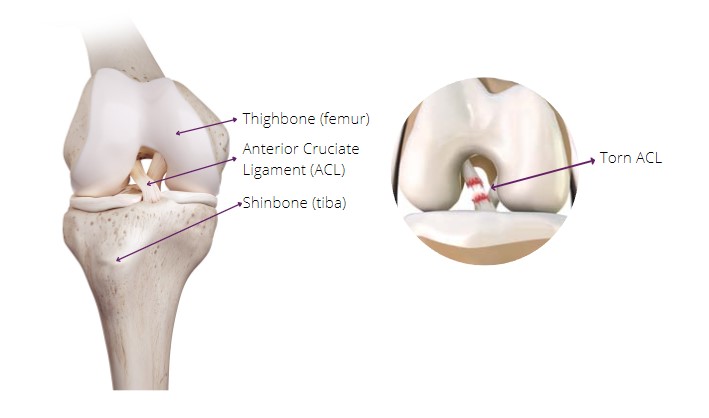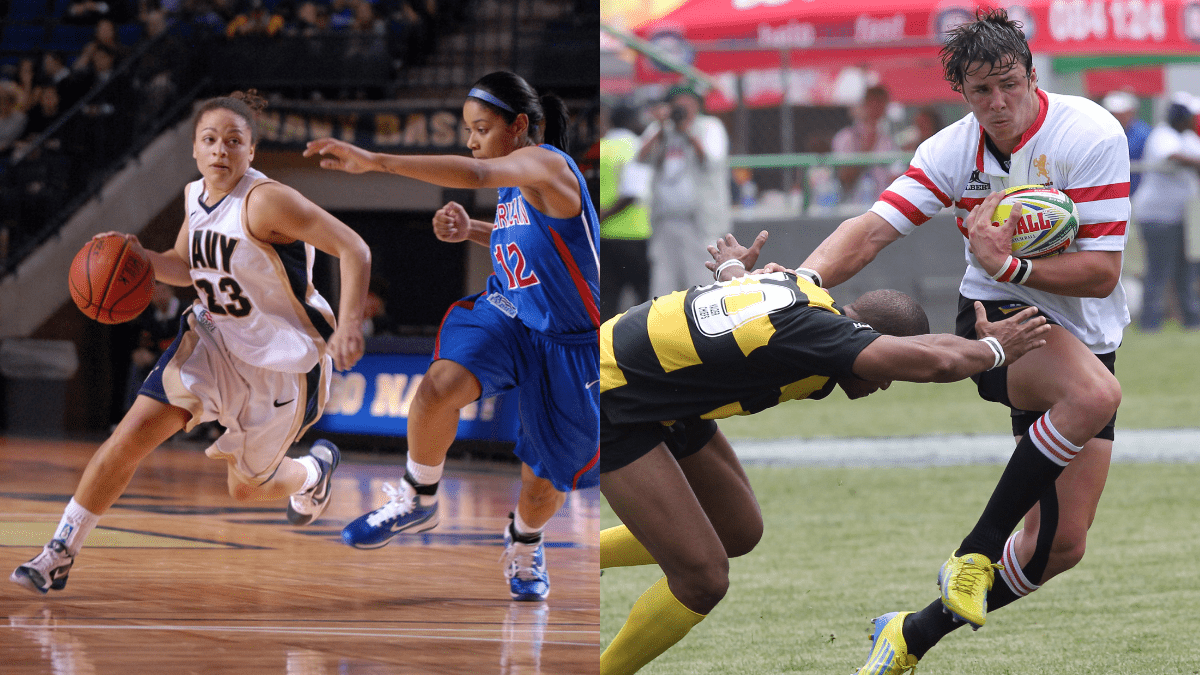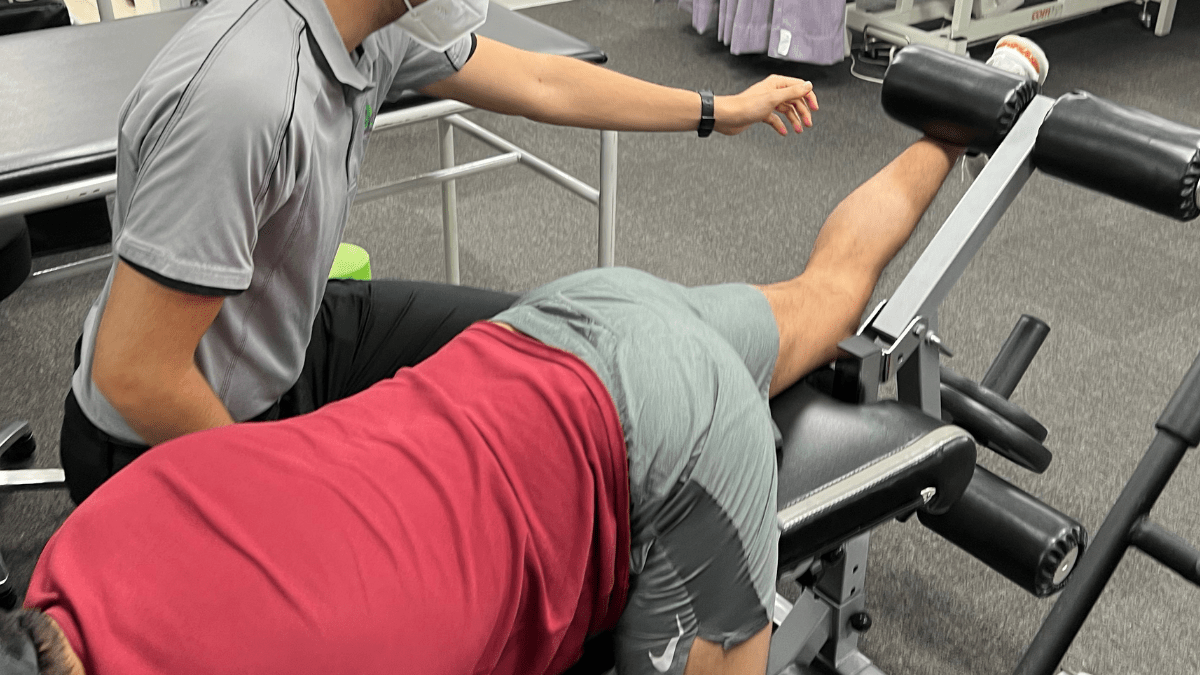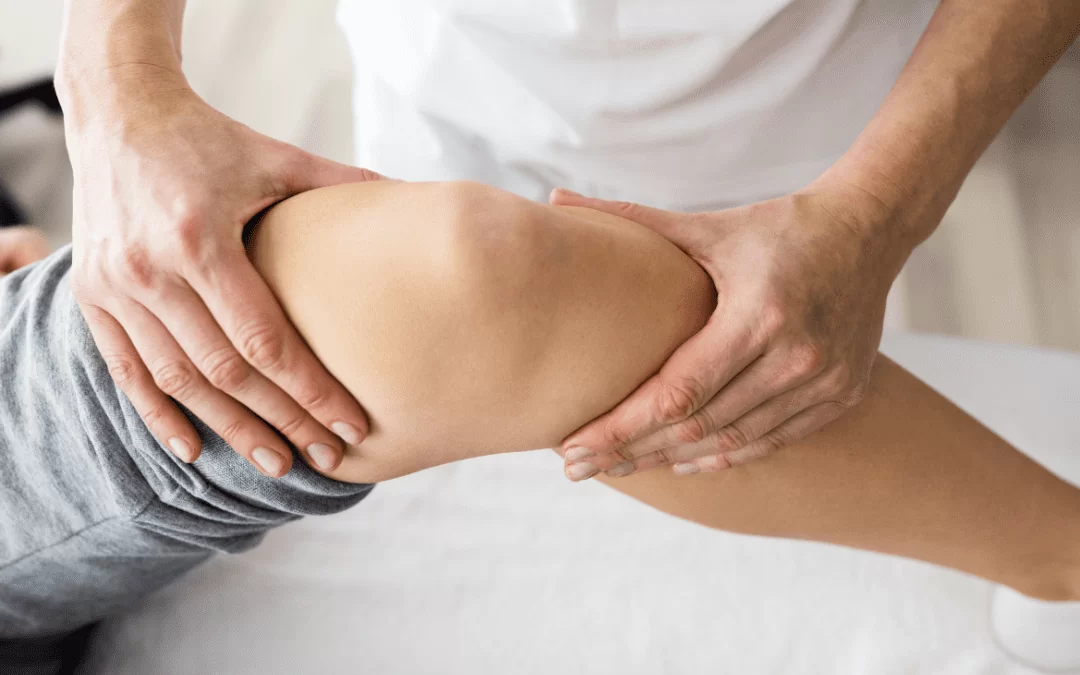Current rates of ACL Injury
The ACL is the most commonly injured ligament in the knee (Evens et al., 2022) and unfortunately, Australia has the highest reported rates of ACL injury and reconstruction in the world (Vertullo et al., 2018)…but do they all require surgery?

What is the ACL?
The ACL (anterior cruciate ligament) is an important ligament found within the knee. It’s considered the primary stabiliser of the knee joint and works alongside the PCL, MCL, LCL, menisci and muscles to keep the knee stabile. The ACL’s role is to prevent anterior translation (forward movement) of the tibia (shinbone) in relation to the femur (thighbone), optimising rotational stability of the knee joint, helping to prevent the knee from “giving way”. In addition, the ACL contributes to proprioception of the knee, enabling good joint awareness and balance.
Diagnosis/Assessment
Physiotherapists are experts at diagnosing knee injuries, and our physio team are highly competent in diagnosing ACL injuries. An initial diagnosis is made both from the subjective history and our comprehensive physical examination, and then confirmed typically with an MRI. Common physical assessment findings that indicate an ACL rupture include:
- Positive Lachman’s test (no end feel), pivot-shift test and anterior drawer
- Reduced knee ROM in flexion & inability to fully straighten the knee.
- Knee joint effusion & swelling
- Lateral joint line tenderness: “In patients with ACL rupture there is an 80% probability of concurrent associated bone bruising at the femoral condyle or tibial plateau (Boks et al. 2007)
- Confirmation of an ACL tear occurs via MRI (which will also look for other coexisting injuries including MCL/LCL tears, meniscus tears, or impaction fractures).

Signs & Symptoms of a Rupture
ACL ruptures usually occur as a result of injury during a non-contact movement – such as cutting, changing direction, or the knee buckling inwards after landing from a jump. Patients injured will commonly report feeling a “pop” inside the knee, followed by rapid swelling, pain and restricted knee range of motion. Patients commonly also report instability events or the knee “giving way”.
Risk Factors
- Sports involving running, jumping, pivoting/changing direction.
- Gender: “Female athletes are two to eight times more likely to experience than males” (Macmillan, 2020).
- Poor knee/hip control.
- Weak hamstrings.
- Anatomy & Poor biomechanics – including lower kinetic chain dysfunction.
- Previous ACL injury – Re-rupture rates can be very high with up to 30% of people under the age of 20 sustaining a 2nd ACL injury within 2 years returning to sport (Hughes et al, 2020).

Is Surgery Required?
The decision on whether to have surgery or not, is based on knee stability, whether other structures are injured or not, the age and lifestyle of the patient, and their desired functional and sporting goals. Surgery is not always needed after an ACL tear. If the patient has enough knee control and stability for their required tasks after conservative physiotherapy management, it is possible to avoid surgery. However, this decision is made by the orthopaedic surgeon and patient, with input from the physiotherapist.
Conservative (Non-Surgical) Approach
- Typically lower functional goals – everyday activities not involving pivoting, sharp changes of direction, moving on unstable ground and gardening.
- Can perform required functional tasks without instability or knee giving way.
Surgical Management
- Typically higher functional goals – wants to return to sports involving running, cutting, jumping/landing and pivoting.
- Patient reports feeling instability and episodes of knee giving way

What Happens After Initial Rehabilitation
As rehabilitation progresses, whether conservative or surgical management is undertaken, physiotherapy aims to improve strength and regain control of the core and lower limb ensuring all parts of the kinetic chain can meet the demands placed upon it for a safe return to life, work or sport. Specific objective markers should be met in the clinic so that patients can commence running, sport specific movements, specific training and eventually a full return to sport. It is crucial to understand that the decision of when to return to sport is criteria-based NOT time-based. Literature has shown that athletes who successfully pass specific return to sport criteria have a 4 times lower risk of injury (Grindem et al, 2016 & Kyritsis et al, 2016). The rate of ACL reinjury has also been shown to decrease by 51% for each month return to sport is delayed until 9 months after surgery (Grindem et al, 2016) thus, it is highly recommended that a patient commits to at least 9—12 months of dedicated rehabilitation before thinking about returning to sport. In our clinic we use our AxIT strength testing system to track and analyse our patients progress, guiding them as to when a safe return to activity is realistic. ACL rehabilitation requires a long-term commitment to obtain a good result and reduce the chance of re-injury. The ultimate goal of physio rehabilitation is to restore the patient’s quality of life, minimising the chance of re-injury and aiding a safe return to normal exercise, sport and everyday function, regardless of whether a conservative or surgical approach is taken.
Why is Physio Management Important?
Physiotherapy management is important in the recovery of an ACL tear regardless of surgical or conservative management. Immediately post injury & after surgery physio aims to regain full knee movement, improve muscle control, restore a normal gait and reduce swelling. The overall physio rehabilitation program aims to teach a patient to regain control and strength of the hip, knee and ankle ensuring all parts of the kinetic chain can meet the demands placed upon it for a safe return back to life, work and sport.
Certain objective markers should be met in the clinic so that patients can commence running, sport specific movements, specific training and eventually a full return to sport. It is crucial to understand that the decision of when to return to sport is criteria-based instead of time-based. Literature has shown that athletes who successfully pass a specific return to sport criteria have a 4 times lower risk of injury (Grindem et al, 2016 & Kyritsis et al, 2016). The rate of ACL reinjury has also been shown to decrease by 51% for each month a return to sport is delayed until 9 months after surgery (Grindem et al, 2016). Hence, it is highly recommended that a patient commits to at least 9—12 months of dedicated rehabilitation before thinking about returning to sport as re-rupture rates can be very high with up to 30% of people under the age of 20 sustaining a 2nd ACL injury within 2 years returning to sport (Hughes et al, 2020) – ACL rehabilitation is a big injury that requires a long-term commitment to obtain a good result.
The goal of physio rehabilitation is to restore the patient’s quality of life, minimising the chance of re-injury and aiding a safe return to normal exercise, normal sport and normal everyday function.


